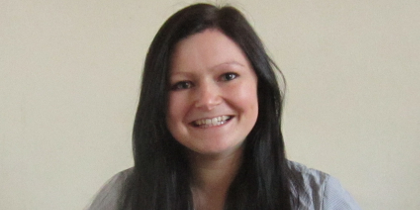
October 13, 2015, by Laura Estrop
A day in the life of an eFX Trader
By Lucy Emptage, Markets Graduate working for Royal Bank of Scotland
I arrive at work by 6.30am and the first thing I do is check my emails. I want to know what happened overnight in Singapore, so I check in with one of our Singapore traders. I need to know what’s been going on in the market, often there has been Australian, Japanese or New Zealand data overnight, and I want to find out if anything has been particularly tricky to trade.
At 7.15am we get risk from Singapore – this means all the trades from clients go into my book, so I have the risk that the market price of a currency changes. Trading can be split up into two parts: pricing and hedging, though they’re very much related.
Pricing
We send out two-way prices meaning clients can either buy or sell currencies to us – a bit like when you go on holiday, you can buy the currency before you go, and sell them again when you get back. When you do a currency transaction, you buy one currency and you sell the other currency e.g. you buy US dollars and you sell British pounds. If one client buys US Dollars from us (against Japanese Yen), and one client sells US Dollars (against Japanese Yen) and the market hasn’t moved then we make money through the spread we charge.
Hedging
Every time a customer trades with us, we have risk. Let’s take an example: If a customer buys 25m USDJPY, the trader has sold them USD so we are short USD. I can make money if USD goes down, and lose money if USD appreciates – that’s a risk. My job is to manage that risk prudently.
We’re an eFX desk – that means that we focus on the electronic side of the business. We send our prices electronically to clients through lots of different platforms, and they can trade on those prices, just like you’d use internet banking to make payments. We try to reduce manual risk management and teach the machine to be far more intelligent and much quicker than a human brain. Throughout the day, my job is to act as a pilot – tweaking settings on our pricing and hedging so that we get risk in at the right rates, and hedge it at the right time and in the right way.
All the while that I’m managing the risk of our book, I’m also multitasking! We have a strong relationship with the Sales teams and we’re in frequent contact with them and clients. I attend client meetings so that I get the opportunity to find out more about our customers, which are at the heart of everything we do. The more I understand about their needs, the better I can serve them so I spend time doing in-depth client analysis ahead of these meetings so I go in prepared.
No day is the same
On a Trading floor you never know what might happen next. One second I might be calmly doing some client analysis and suddenly an unexpected piece of news comes in and it’s all hands on deck. Teamwork is extremely important – there are five traders in our team, but we constantly liaise with product managers, developers, sales and other trading desks to get the best outcome for our clients.
At 4.15pm the risk goes over to the US and we leave our colleagues in New York to handle the risk that comes in until Asia come in, but my day isn’t quite over yet… I spend the next few hours sorting out admin which usually is half done as I’ve been distracted by something in the market. I finish things up, tie up the loose ends in my client analysis and fire off an end of day email to my team so we have a record of everything. I’m usually out the door between six and seven, and I’ll either head off home or meet some friends for dinner. That’s one of the great things about a Markets job – you start early, you’re busy all day but once the markets shut, you have the evening off.
If you would like to find out more about the role of an eFX trader, book an appointment with one of our careers advisers.
No comments yet, fill out a comment to be the first

Leave a Reply